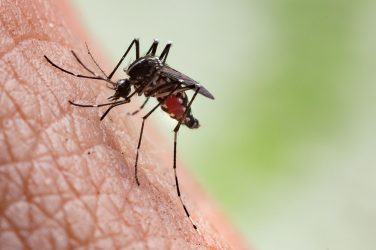The estimated aging of the Brazilian population and a rise in medical costs should increase health insurance prices by 2030, says Leandro Fonseca, head of the National Regulatory Agency for Private Health Insurance and Plans (ANS). A forum organized by the American Chamber of Commerce (Amcham) in São Paulo discussed the matter recently.
ANS estimates that one of every four Brazilians has a health insurance plan. The sector performed more than 1 billion medical procedures in 2016 and handled US$ 50,360 billion.
Leonardo Paiva, a representative from the Brazilian Health Regulatory Agency (Anvisa), says that Brazil is expected to undergo a demographic transition before becoming a developed country, which makes the challenge even more difficult.
By 2060, the 80-plus age group will have skyrocketed to 19 million people, according to the Brazilian Institute of Geography and Statistics (IBGE).
“We’ll have a shift from infectious diseases to chronic illnesses [more common among the elderly]. The industry is preparing for this”, Paiva declared.
According to Paiva, Brazil’s public health system must be ready for the rise in the prices of medication targeted at older people, who suffer from chronic diseases. He foresees an increased number of court cases forcing the government to pay for the medication.
In 2015 and 2016, US$ 310 million were spent per year on the 10 most requested drugs in court.
Management
The lack of good management among health insurance providers is another issue mentioned by Fonseca. He noted that Brazil has up to 900 providers, 125 of which cover 80% of beneficiaries.
Fonseca also remarks that many clients undergo unnecessary medical exams for lack of information. As an example, he mentioned 132 magnetic resonance scans for every thousand people, which he described as above normal.
“There is a huge waste of resources because beneficiaries are not told to search for alternatives within the treatment network. The solutions are using the insurance judiciously and revamping the system,” he said.
Faced with the difficulties, the best health care professionals leave the providers and service quality deteriorates, Fonseca argues. When health insurance companies go through financial difficulties, they are seldom acquired by other firms due to the risk of further legal problems.
“There is no wholesome alternative, legally speaking, for companies being acquired. Its services grow worse in a process that can take six years. In only 20% of the cases there is a recovery and a return to the market.”
No Exercise
A mere three out of every ten adult Brazilians exercise or play sports on a regular basis. Men also exercise more than women, and people with higher income have more access to sports.
The figures can be found in the 2017 National Human Development Report – Movement is Life: Physical Activities and Sports for Everyone (in a literal English translation), the first survey of its kind conducted by the United Nation Program for Development (UNPD).
The document reports that 37.9% of the Brazilians interviewed in 2015 said they play sports. The rate was higher among men (42.7%) than women (33.4%). The data also indicate that being a young, white, upper-class, educated man with no disabilities means considerably more physical exercise in one’s everyday life.
On the other hand, women from lower social and economic levels and less schooling, as well as elders, black, and disabled people make up the majority of those who do not exercise.
Also, people with a per capita household income of up to five minimum wages or more exercise up to 71% more than the average among adults. Those with no schooling whatsoever exercise up to 54% less than the average among adults.
The report makes recommendations directed at the government in such fields as health care, education, sports, and human development.
“The data considered confirm the understanding that physical exercise and sports are not limited to an individual decision, but is also a product of how society builds collective life. This means that recommending individuals to do more exercise without creating real opportunities for people to become engaged with the practices, or without facing social constraints limiting involvement, will hardly change this landscape,” the report reads.
To boost sports-related rates in the country, UPND suggests that the government, the private sector and society adopt public policies and create initiatives in line with the importance of such activities.
“Policies aimed at the promotion of physical activities and sports must not limit their focus to individual responsibility and change in behavior. A number of deep-rooted conditions make an impact on people’s habits. Thus, policies should redress inequalities as well as seek real solutions, with an emphasis on participation and social control,” the text reads.
Investment
UNPD reports “highly concentrated private investment,” especially from families. According to the report, families invested US$ 16 billion in sports in 2013. In the same year, clubs invested US$ 1.2 billion and companies US$ 722 thousand. As for public funding, the amount totaled US$ 185 million from the federal government, US$ 744 thousand from state secretariats, and US$ 436 thousand from municipalities.
“The lack of state involvement in the promotion of sports force those interested to resort to the market and pay to gain access to these activities,” the study concludes.
Lack of Sanitation
In Brazil, 45% of the population still have no access to appropriate sanitation services. The figures can be found in a document entitled Sanitation Atlas: Depolluting Drainage Basins, released by the National Water Agency (ANA) and the Ministry of Cities.
The study brings information about sanitation services throughout the country, with a focus on the protection of water resources and its sustainable use for the dilution of waste as well as the improvement of strategies to take these services to all underserved areas.
The National Plan for Basic Sanitation (Plansab) regards as appropriate sanitation the use of septic tanks or a network for the collection and treatment of sewage. According to this criterion, 55% of Brazilians have access to appropriate sanitation.
The survey reports that 43% of the population are covered by a collective system (sewage collection and treatment network and stations), 12% are served with septic tanks (individual solution), 28% by sewage that is collected but not treated, and 27% are unassisted.
Tests were conducted in each one of the country’s 5,570 municipalities, with local features and drainage basins taken into account. Rural areas were not surveyed by the study.
Providing all urban households throughout Brazil with sanitation would demand some US$ 48 billion by 2035. Approximately 50% of municipalities, which need conventional sewage treatment services, require 28% of the total estimated value. Seventy of the 100 most populated municipalities require complimentary or joint solutions, and add up to 25% of the investment.
ABr















